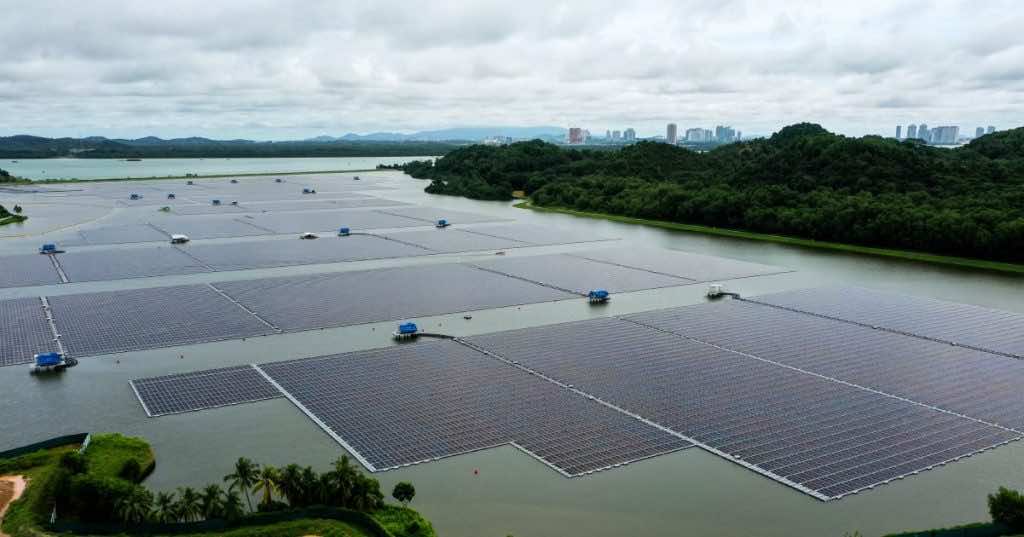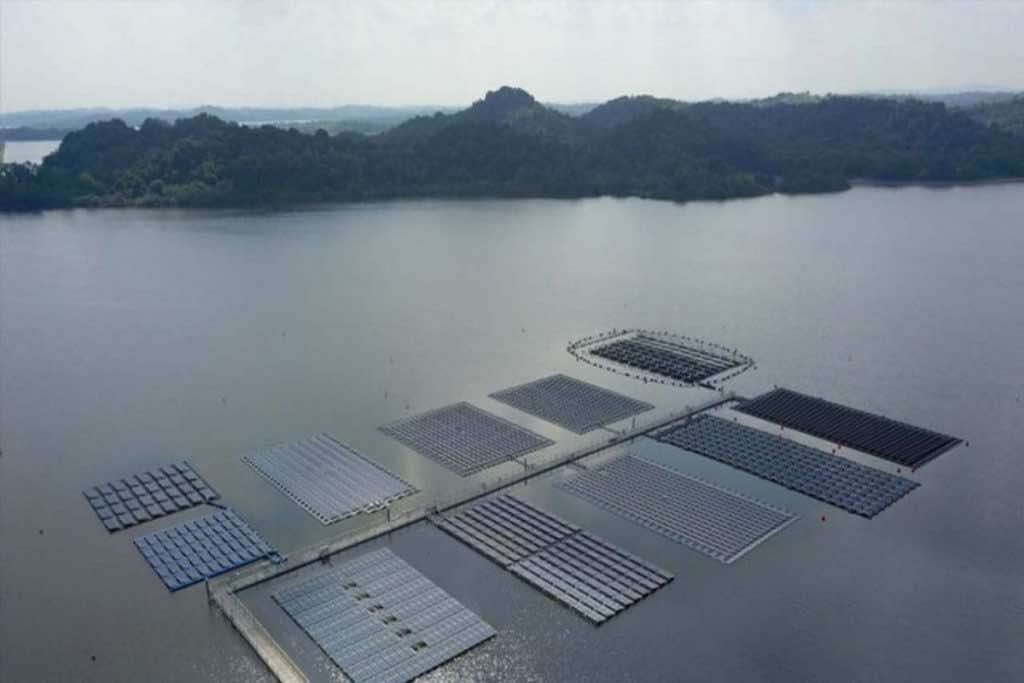Like other countries, Singapore is also investing heavily in clean and renewable energy. They are among the biggest per capita carbon dioxide emitters in Asia, China is still number one I think but that could have changed after their continuous crackdowns on bitcoin mining operations. The challenge for Singapore is that it doesn’t have big and flatlands like other countries so making traditional wind farms or solar farms is difficult. So the only solution is to build them over lakes.
Singapore just unveiled one of the world’s biggest solar farms but interestingly, this farm isn’t built on land but top of a reservoir. The farm covers an area of the size of 45 football pitches or 45 hectares. The floating solar farm was built as part of Singapore’s latest attempts to reduce its carbon dioxide emissions as much as possible. The farm was built on top of the Tengeh reservoir. The contains around 122,000 floating solar panels.

Singapore plans to almost quadruple its solar energy production by 2025. This means that we’ll be seeing similar floating solar farms like this one being built in the future. It’s not only Singapore though. Britain is also planning to completely replace old petrol and diesel goods vehicles with electric cars by 2040 and Amazon has been buying solar and wind farms by the dozen.
Singapore is currently planning to make its plants off its coasts and in similar reservoirs. This new floating farm can produce up to 60 megawatts of electricity and is expected to reduce carbon emissions equivalent to removing 7,000 diesel or petrol cars from the streets. These numbers were shared by Sembcorp Industries and the national water agency PUB.

Sembcorp Industries are the ones who built the floating solar farm and I guess we’ll be seeing more of their work soon considering Singapore’s plans. According to Chief Executive Ng Joo Hee, of the national water agency PUB “Solar energy is plentiful, clean and green, and is key to reducing PUB’s and also Singapore’s carbon footprint”. Singapore also has another solar farm in the Johor Strait. The farm serves to separate the state from Malaysia.
Singapore’s green plan includes planting trees, reducing waste that’s sent to landfills, and building a better infrastructure of charging points to encourage people to buy electric cars. Singapore is still behind other countries in its efforts to reduce carbon emissions but they have taken the first step.


